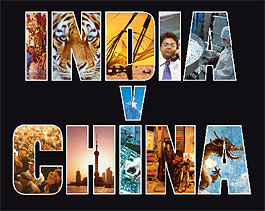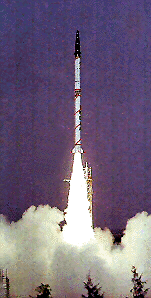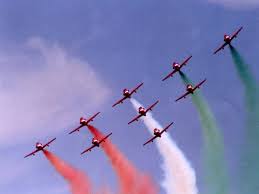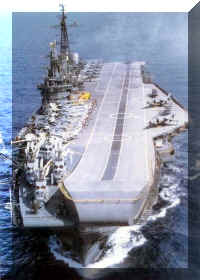10th OCTOBER 1962 INDO- CHINA WAR
India v/s China
 Hu Shih (former ambassador of China to the USA) said “India conquered and dominated China culturally for 20 centuries without ever having to send a single soldier across her border.”
Hu Shih (former ambassador of China to the USA) said “India conquered and dominated China culturally for 20 centuries without ever having to send a single soldier across her border.”India’s China 1962 war
Book by Neville Maxwell, foreign correspondent for ‘The Times’ (Excerpts by Gaurang Damani)
This book is a dispassionate account of Nehru’s policies and actions which lead to the border war. It has been assembled using facts from Indian government official sources and documents. Almost no part of this book has come from the secretive Chinese official sources.
There were 2 zones where the 1962 action took place viz. Aksai Chin (Jammu & Kashmir) and NEFA (North East Frontier Agency, currently known as Arunachal Pradesh).
1899
Distrustful China resisted all attempts by the British to settle common boundaries between British India and China in the Aksai Chin and Arunachal Pradesh areas.
1914
After China had lost control over Tibet, the British negotiated the McMahon line at Arunachal Pradesh, with Tibet in 1914. In Aksai Chin, the British never communicated the Johnson-Ardagh alignment as a boundary proposal to China, from which the Indian claim was later derived. Hence the Chinese thought that Aksai Chin was a disputed territory because the British had unilaterally mapped it as India (even though India’s claim may have been stronger than China’s).
1950
When China attacked Tibet, USA offered help to India to defend Tibet. Their estimate was that India had only to send a brigade of troops to Tibet and China would have held off. Infact, Sardar Patel wrote a long critical letter to Nehru, criticizing his Tibet policy and China appeasement policy! (this letter is published in the book ‘Himalayan Blunder’, by Gen Dalvi, 1969, AND also ‘Between the lines’, Kuldip Nayar, 1969). Then, Nehru unilaterally declared that McMahon line is our international border, but curiously failed to say anything about Aksai Chin.
1956-58
China build an excellent all-weather motorable 750 km long road in western Tibet, of which 112 km was through Aksai Chin. But surprisingly, Nehru formally complained to China only in 1958 that this was encroachment into Indian territory and China move her only traffic road of western Tibet. China thought this was injury to China, as for this road India had no use and there was no benefit to India. At this point if both India and China had agreed there would have been status quo. In reply to Nehru’s letter, China sounded willing to accept McMahon line in Arunachal Pradesh as the border, in return of Aksai Chin as the border in the western sector.
Highway construction between Srinagar and Leh was stopped in 1954-56 due to allegations of corruption. So during the 1962 war, Leh could be approached only on mules or supplies had to be air-dropped.
August 1959
Nehru hid about this boundary dispute to the Parliament till August 1959. Infact he lied to the Parliament that India had not received any letters from China! India and China had first exchanged letters about the Arunachal Pradesh border in 1954. Nehru lied saying that the western border (Aksai Chin) was governed by a 1842 treaty between Gulab Singh (ruler of Jammu and Kashmir) and Emperor of China (who was not even in the picture then). Nehru changed his official views several times by saying he was quoted out of context, further complicating matters.
1950-1959
China had settled and completed tough but reasonable negotiations on its boundary disputes with Nepal, Pakistan, Mongolia, Afghanistan and Burma (where it accepted the McMahon line).
1959
Mood got worse when Tibetans rose for independence and Dalai Lama fled to Mussourie, India (then later he moved to Dharamsala). Nehru visited him immediately in Mussourie and further irritated China. China’s reply to India sounded reconciliatory but could have been easily interpreted as inflexible.
1960
Chinese Premier Chou En Lai was shocked by Nehru’s intransigence during a New Delhi summit on border talks and said he was an unreliable person.
 Plight of the Indian army
Plight of the Indian army
Indian Army of 280,000 was short by 60,000 files, 700 anti-tank guns, 5,000 radio field sets, thousands of miles of field cable, 36,000 wireless batteries, 10,000 one-ton trucks and 10,000 three-ton trucks! Two regiments of tanks were not operational due to lack of spares. Indian troops were using .303 rifles which had seen action even before World War I (not II). Chinese troops were equipped with machine guns/ heavy mortars/ automatic rifles. Nehru prohibited import of arms because his Non-alignment image would look bad! He often quoted Gandhi’s ahimsa!
The general altitude in Aksai Chin was 14,000 feet and patrols had to reach as high as 16,000 feet. Temperatures were artic and the Indian troops winter clothing was inadequate. Mules were not of much use at that altitude and so supplies had to be air-dropped. The Indian troops had to trek whereas the Chinese troops moved around in trucks.
To add insult to injury, it was the general impression that Nehru had an inefficient chamcha as a Defense Minister Krishna Menon, whom both Congress and the opposition parties opposed. Krishna Menon did not implement Gen Thimayya’s recommendations and Gen Kaul was made Chief of General Staff (CGS), though Kaul did not have any combat experience (but because Kaul may have been a relative of Nehru and a Kashmiri pandit!). This severely effected the morale of the armed forces.
1961
Nehru openly talked of war, if Chinese did not withdraw from Aksai Chin (but refused to talk about McMahon line). Nehru lied in Lok Sabha that India was militarily stronger in the western sector. To this, Gen SD Verma (Corps Commander) wrote to Krishna Menon’s favourite Gen Thapar (Chief of Army Staff – COAS) that this was incorrect as there were only 2 battalions in Jammu and Kashmir (when the requirement was of 7) AND that the Chinese outnumbered India by atleast 5:1. He was forced to resign and his pension was held up for a year! Gen Daulet Singh replaced him as GOC-in-C (Army Commander in Chief) in this sector.
Nehru, Krishna Menon, Gen Thapar and Gen Kaul implemented a flawed Forward policy’ , inspite of the Indian army not being adequately equipped. This policy involved moving patrols and posts into Chinese-held territory (sometimes behind Chinese posts), with the naiive belief that China will not attack a non-violent nation.
Chinese government send a lot of warnings (diplomatic and otherwise) but Nehru dismissed them as bluff. For all his loyal affection to Nehru, Krishna Menon wrote of him ‘Nehru lets himself be edged bit by bit into a situation from where escape is difficult. He cannot be acquitted of failure’.
President John F Kennedy after meeting with Nehru in Washington DC in Nov 1961, said that it was the worst head of state visit and it was like trying to grab something in your hand only to have it turn out to be just fog.
Mid 1962
Ambassador of India to the USA, BK Nehru (cousin of Jawaharlal Nehru) said that the Indian army was badly equipped and could not ensure security, thus contradicting repeated assurances by Nehru to the Lok Sabha. Nehru withdrew the Indian ambassador to China but all throughout the war maintained that diplomatic relations must be maintained.
July 1962
Gen Daulet Singh of Western command (Aksai Chin area) wrote to the Army Headquarters (HQ) about the enormous numerical superiority of the Chinese and the helplessness of the Indian army (as it was anchored to lower ground due to the dropping zones, and the Chinese army was at a greater altitude). He requested that the forward policy be suspended OR a division of 4 brigades be added. He was ignored.
The plight in the Eastern sector (Arunachal Pradesh area) was the same. Posts were set up in remote locations (there were no roads here and even air dropping supplies was not possible due to the terrain). The Chinese had all-weather roads on its side and their troops were acclimatized at that altitude. The Indian geography had jungles, mountains, 300 feet deep valleys. Ropes and bamboo suspension bridges were used, which even mules could not cross!
Sep 1962 – the trigger
A forward post was setup at Dhola/ Thag La ridge. A border line drawn on the map corresponded to a few kilometers on the actual ground. But still this post may have been North of the McMahon line (in Chinese held Tibet, not in India), as confirmed by the army officers, who were in meeting with the Defense Minister Krishna Menon. The official minutes of this meeting were never noted down (but later reported in newspapers and a few books).
From the nearest road at Tawang in Arunachal Pradesh, this Dhola post was a 6 days uphill trek, if there were no landslides. And the nearest airbase in Tezpur was a few days away from Tawang. Whereas for the Chinese it was 3 hours from their nearest road (which was constructed to carry 7 ton trucks).
The altitude in this area was 13,000 to 16,000 feet and winter was approaching, so proper clothes and shoes were required. But the Indian troops were given a cotton uniform with a thin sweater to guard against the wind. Only 30% of air dropped supplies reached the troops, as the parachutes used were re-packed and of inferior quality. This was NOT a war. It was suicidal politics!
The Indian troops came face to face with the Chinese at Dhola post, and there was a skirmish on 8 Sep. It seemed to be a ploy of the Chinese to make India provoke the Chinese into a cause for aggression. But now 2,500 Indian troops and 500 porters stood there without winter supplies. Still Indian troops were outnumbered 20:1. Gen Umrao Singh of XXXIII Corps suggested that the troops be withdrawn to 3 km south of the McMahon line, as they were north of it at Dhola. Suggestion was ignored and he was removed!
Mid Oct 1962
Nehru told journalists that in NEFA (Arunachal Pradesh) the advantage was with India, thus misleading the public which lead to their expectation of prompt and decisive action against an allegedly inferior Chinese force.
Gen Kaul (Nehru’s cousin) who was on leave from Sep during the crisis, reached Dhola post to take charge. Kaul immediately claimed of medical pulmonary trouble and withdrew to Tezpur (Assam) on 17 Oct, and then Delhi. He did not go to a hospital, but went home!
Gen Dalvi makes his last of various numerous requests to re-group troops on 19 Oct. When ignored, he resigned as a last resort.
The actual war (20 Oct to 21 Nov 1962)
On 20 Oct 1962, the war started as China attacked Indian troops at Dhola and other posts at Arunachal Pradesh and Aksai Chin. China issued a false statement that India had launched a full scale attack. The Indian public reaction turned from outrage to resolution and surprisingly then to optimism and this war came to be seen as a means for the ultimate triumph!
A group of Congress and Opposition MP approached President Radhakrishnan to remove Nehru, suspend Parliament and impose President’s rule. Nehru kept defending Krishna Menon till 7 Nov, but finally due to pressure from his own cabinet ministers; Chief Ministers; Members of Parliament and party-men and the public, Menon was forced to resign.
USA and UK supported India and offered arms. Almost all Non-Aligned nations and the Arab world was silent and urged restraint. This hurt Nehru the most, as he always felt he was the leader of the Non-aligned Movement (which included Arab countries). Russia (USSR) leaned towards China and blamed Nehru for the conflict. Finally Nehru accepted US aid on 29 Oct.
Mao Tse Tung had once said that in every battle, concentrate an absolutely superior force encircle the enemy forces completely and strive to wipe them out thoroughly. Fight no battle unprepared, fight no battle you are not sure of winning.
China had used 3 divisions in Arunachal Pradesh and penetrated from Tawang to Se La to Dirang to Dzong to Bomdi La AND another at Walong encircling the Indian troops, which were completed scattered and outnumbered. While eastern command (Arunachal Pradesh) was with Gen Kaul, the Chinese troops kept penetrating Arunachal Pradesh and had almost reached Assam. The Western command which was under Gen Daulet Singh was doing great and though India was at a disadvantaged position, it was an even contest there.
Some key events during the war, that may have altered the Chinese strategy:
- Finally, Nehru’s relative Gen Kaul (Chief of General Staff) resigned and was replaced with Gen Sam Manekshaw! (Nehru offered Kaul the post of Governor of Himachal Pradesh, after the war!)
- Krishna Menon’s favourite, Gen Thapar (Chief of Army Staff) was replaced by Gen JN Chaudhari, who ordered the Indian troops in Arunachal Pradesh, to take up positions and under any circumstances retreat no more.
- Where the Indian troops were able to stand and fight (even in Arunachal Pradesh) Chinese suffered heavy casualties. For example on 17 Nov, at Thembang alone, China lost 300-400 troops.
- In Aksai Chin, the Chinese were not at all able to penetrate further!
- The Chinese supplies were stretched as they had reached the Assam border.
- For some strange reason, Nehru had decided against using the Indian Air Force, to cut off the stretched Chinese supplies lines.
- Dumping the Non-Aligned Movement, Nehru had requested the US for help. An US aircraft carrier had reached the Bay of Bengal.
- Though hurt, the Indian public seemed mentally ready for a long term war!
On 21 Nov, China unilaterally announced ceasefire and started to withdraw back to the McMahon line.
Dec 1962 – after the war
India had lost 1,363 valiant soldiers in fighting and 90% of whom were in Arunachal Pradesh alone, due to bad planning and horrible leadership. YB Chavan became Defense Minister, on the day the war ended. Nehru had finally learnt his lesson at the expense of a nation, and stopped interfering into the internal affairs of the army.
China wanted a settled boundary and had taught Nehru a lesson! Nehru had destroyed India’s psyche, by sticking to his pride and false beliefs. The Indian army’s report of the war was never made public.
Median Age (in years) of population
Source: UN
| Country | 2005 | 2010 | 2015 (est) | 2020 (est) |
| India Indonesia Brazil China USA Russia UK Western EU Japan | 23.7 26.5 27 32.1 36 37.3 38.9 40.5 43.1 | 25 28.2 29 34.2 36.6 38.1 39.9 42.2 44.7 | 26.5 30.1 31.3 35.6 37.2 38.9 40.3 43.8 46.6 | 28.1 32 33.6 37.1 37.9 40 40.4 44.9 48.6 |
Why the world thinks, that the Indian elephant may overcome the Chinese dragon? By 2020, India will contribute an additional 136 million people to the labour pool, compared to 23 million by China and 11 million by USA. Meanwhile, Japan’s and Europe’s working population will decline by 8 million and 21 million people respectively.





No comments:
Post a Comment